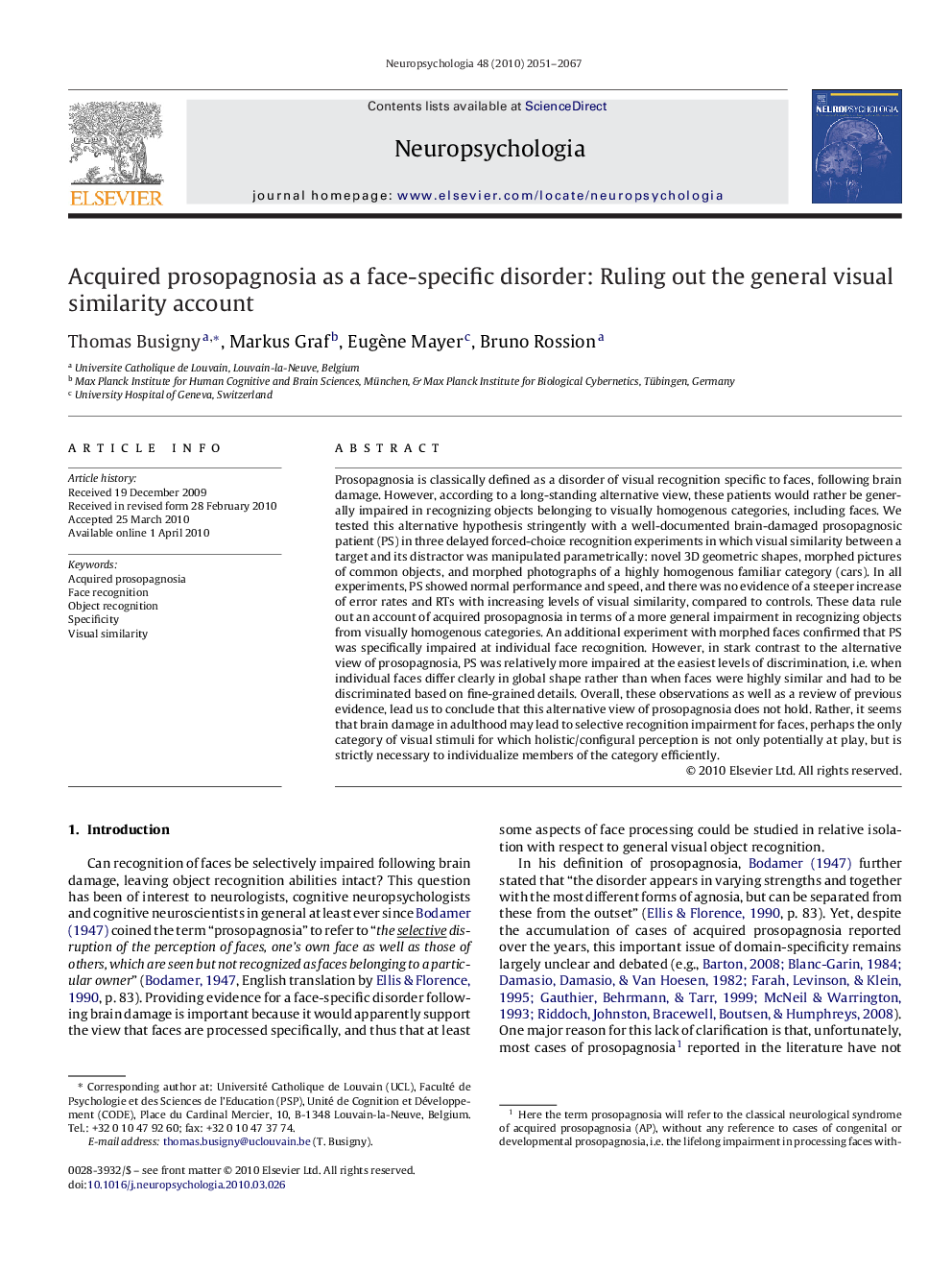| کد مقاله | کد نشریه | سال انتشار | مقاله انگلیسی | نسخه تمام متن |
|---|---|---|---|---|
| 944989 | 925746 | 2010 | 17 صفحه PDF | دانلود رایگان |

Prosopagnosia is classically defined as a disorder of visual recognition specific to faces, following brain damage. However, according to a long-standing alternative view, these patients would rather be generally impaired in recognizing objects belonging to visually homogenous categories, including faces. We tested this alternative hypothesis stringently with a well-documented brain-damaged prosopagnosic patient (PS) in three delayed forced-choice recognition experiments in which visual similarity between a target and its distractor was manipulated parametrically: novel 3D geometric shapes, morphed pictures of common objects, and morphed photographs of a highly homogenous familiar category (cars). In all experiments, PS showed normal performance and speed, and there was no evidence of a steeper increase of error rates and RTs with increasing levels of visual similarity, compared to controls. These data rule out an account of acquired prosopagnosia in terms of a more general impairment in recognizing objects from visually homogenous categories. An additional experiment with morphed faces confirmed that PS was specifically impaired at individual face recognition. However, in stark contrast to the alternative view of prosopagnosia, PS was relatively more impaired at the easiest levels of discrimination, i.e. when individual faces differ clearly in global shape rather than when faces were highly similar and had to be discriminated based on fine-grained details. Overall, these observations as well as a review of previous evidence, lead us to conclude that this alternative view of prosopagnosia does not hold. Rather, it seems that brain damage in adulthood may lead to selective recognition impairment for faces, perhaps the only category of visual stimuli for which holistic/configural perception is not only potentially at play, but is strictly necessary to individualize members of the category efficiently.
Journal: Neuropsychologia - Volume 48, Issue 7, June 2010, Pages 2051–2067